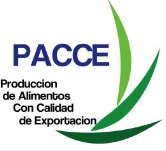 Friedrich Wilhelm Georg Kohlrausch (October 14, 1840 – January 17, 1910) was a German physicist who investigated the conductive properties of electrolytes and contributed to knowledge of their behaviour. He also investigated elasticity, thermoelasticity, and thermal conduction as well as magnetic and electrical precision measurements.
Friedrich Wilhelm Georg Kohlrausch (October 14, 1840 – January 17, 1910) was a German physicist who investigated the conductive properties of electrolytes and contributed to knowledge of their behaviour. He also investigated elasticity, thermoelasticity, and thermal conduction as well as magnetic and electrical precision measurements.
Electrolyte conductivity in solution
In 1874 he demonstrated that an electrolyte has a definite and constant amount of electrical resistance. By observing the dependence of conductivity upon dilution, he could determine the transfer velocities of the ions (charged atoms or molecules) in solution. He used alternating current to prevent the deposition of electrolysis products; this enabled him to obtain very precise results.
From 1875 to 1879, he examined numerous salt solutions, acids and solutions of other materials. His efforts resulted in the law of the independent migration of ions, that is, each type of migrating ion has a specific electrical resistance no matter what its original molecular combination may have been, and therefore that a solution’s electrical resistance was due only to the migrating ions of a given substances. Kohlrausch showed for weak (incompletely dissociated) electrolytes that the more dilute a solution, the greater its molar conductivity due to increased ionic dissociation.
Measuring techniques & instruments
During 1895 he succeeded Hermann von Helmholtz as President of the Physikalisch-Technische Reichsanstalt (PTR – Imperial Physical Technical Institute), an office which he held until 1905.
Here, as in the past, his activities were focused on experimental and instrumental physics: he constructed instruments and devised new measuring techniques to examine electrolytic conduction in solutions. He concluded the setup of the PTR, a task which had not yet been completed on the death of its first president. He introduced fixed regulations, work schedules and working hours for the Institute.
Under direction of Kohlrausch, the PTR created numerous standards and calibration standards which were also used internationally outside Germany.
Kohlrausch was intent on creating optimum working conditions in the laboratories and to shield the labs from unwanted external influences. For six years, for instance, he fought against a streetcar line which was due to be laid near the PTR. However, before the streetcar was to make its first journey, the institute succeeded in developing an astatic torsion magnetometer which was uninfluenced by disturbing electromagnetic fields. The use of this instrument and the shielded wire galvanometer developed by du Bois and Rubens meant that precision electrical and magnetic work continued to be possible.
En Inglés porque solo está asi http://en.wikipedia.org/wiki/Friedrich_Kohlrausch
 orcid.org/0000-0001-6003-7487
orcid.org/0000-0001-6003-7487







 - ULA
- ULA Guia de Alta Montaña
Guia de Alta Montaña Industrial Chemistry – Texas A&M
Industrial Chemistry – Texas A&M Laboratorio FIRP
Laboratorio FIRP Materials Learning – Cambridge Univ.
Materials Learning – Cambridge Univ. Petroleum Refining – Colorado Univ.
Petroleum Refining – Colorado Univ. COLMEQUIM
COLMEQUIM BIOVEN
BIOVEN CARPA
CARPA GUMMYN
GUMMYN PACCE
PACCE PharmaQuim
PharmaQuim PRODELIM
PRODELIM WATERFRESH
WATERFRESH ALITOS
ALITOS Biocosmetiq's
Biocosmetiq's E.B.T. Bebidas y Licores
E.B.T. Bebidas y Licores GELES BETA C.A
GELES BETA C.A NatuVie
NatuVie Productos de Gel de Aloe Vera
Productos de Gel de Aloe Vera Determer
Determer PECTIPRODS Mérida
PECTIPRODS Mérida PETROING C.A.
PETROING C.A. Soft&Pure
Soft&Pure ALQUIVEN C.A.
ALQUIVEN C.A. Deshoil C.A.
Deshoil C.A. Ecopetroliq’s
Ecopetroliq’s Pequinoil S.A
Pequinoil S.A PetroCrack CA
PetroCrack CA Petrol C.A.
Petrol C.A. REFILUB
REFILUB